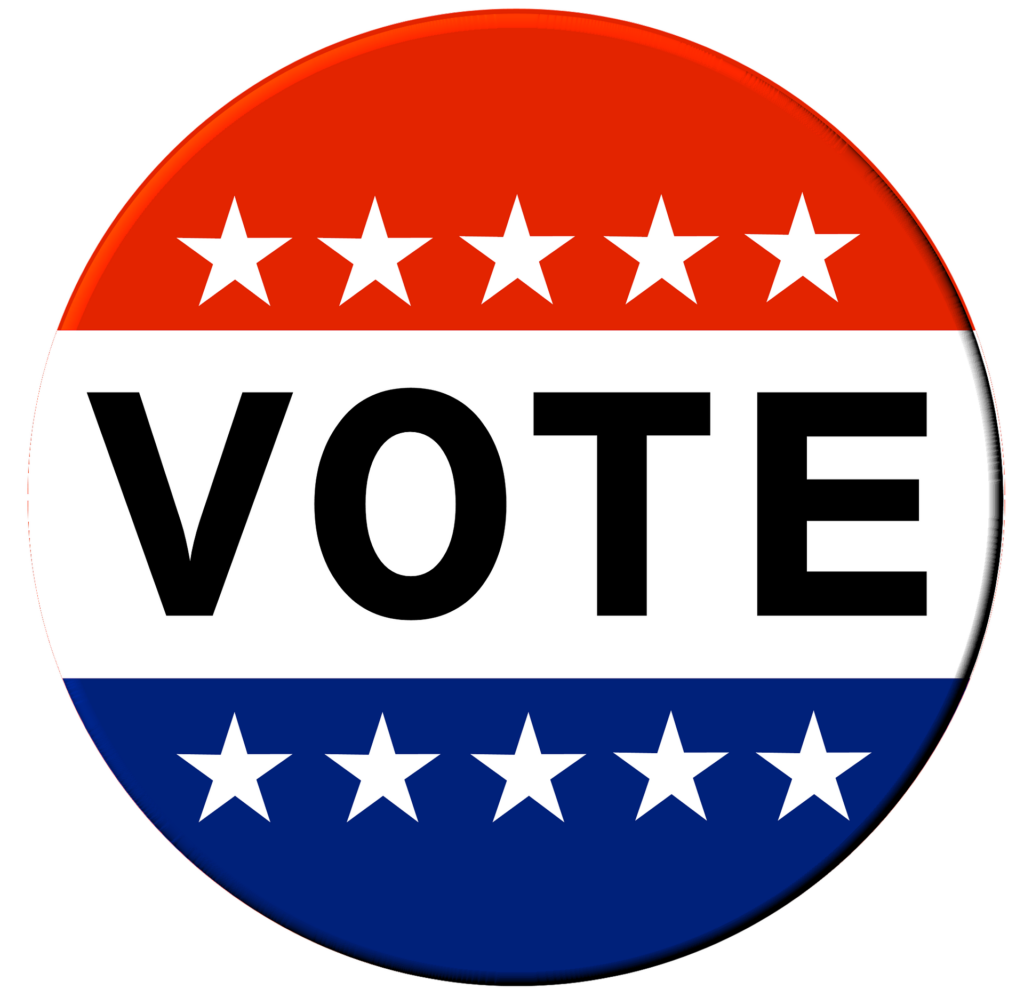Passage of the 26th Amendment
Passage of the 26th Amendment
“Old enough to fight, old enough to vote!” The saying was adopted by student activists during the Vietnam War era in protest of being old enough to be drafted but not old enough to vote. In 1971, the 26th amendment lowered the voting age from 21 to 18, bringing the highest amount (55%) of 18 to 29 year-old voters to the polls in American history during the 1972 elections. The 26th Amendment enfranchised nearly 11 million Americans to vote at 18.
Passage of the 26th Amendment
 Essential Questions
Essential Questions
The following essential questions provide a framework for exploring this unit’s main ideas and themes:
- What has the fight for voting rights looked like for young people in history?
- What are some contemporary barriers to voting that young people face?
New Jersey Student Learning Standards
The materials and suggested lesson plan below satisfy the following New Jersey Student Learning Standards:
6.1.12.CivicsPI.14.a ? ×
×
6.1.12.CivicsPI.14.c ? ×
×
6.1.12.CivicsCM.14.a ? ×
×
6.1.12.CivicsDP.14.a ? ×
×
6.1.12.HistorySE.14.b ? ×
×
Lesson Module
![]() Goal and Learning Objectives: The goal of this lesson module is for educators to teach the history of youth enfranchisement by giving students the opportunity to examine the role of young people at critical points in our nation’s history. We also want students to articulate their thoughts about the impact of Millennial and Gen-Z voting behavior on contemporary politics.
Goal and Learning Objectives: The goal of this lesson module is for educators to teach the history of youth enfranchisement by giving students the opportunity to examine the role of young people at critical points in our nation’s history. We also want students to articulate their thoughts about the impact of Millennial and Gen-Z voting behavior on contemporary politics.
Content: To meet this goal, we provide resources and information designed to explore the important role that younger generations play in society and in politics. Included are timelines, biographies of key figures, and external resources to help spark classroom discussions on youth enfranchisement.
Activity I: History
Context: “Old enough to fight, old enough to vote” was a slogan first heard during WWII after the creation of the first peacetime military draft in U.S. history. The saying was adopted by student activists during the Vietnam War era in protest of being old enough to be drafted but not old enough to vote. In 1971, the 26th amendment lowered the voting age from 21 to 18, bringing the highest amount (55%) of 18 to 29 year-old voters to the polls in American history  during the 1972 elections. The 26th Amendment enfranchised nearly 11 million Americans who were considered old enough to serve in the military, but too young to vote. Young adult voting rates have fluctuated since enfranchisement, but voters between the ages of 18 and 24 have consistently voted at lower rates than other age groups. However, in the 2020 general elections, voter turnout among 18-29 year olds was 50 percent, 11 points higher than the turnout of 2016.
during the 1972 elections. The 26th Amendment enfranchised nearly 11 million Americans who were considered old enough to serve in the military, but too young to vote. Young adult voting rates have fluctuated since enfranchisement, but voters between the ages of 18 and 24 have consistently voted at lower rates than other age groups. However, in the 2020 general elections, voter turnout among 18-29 year olds was 50 percent, 11 points higher than the turnout of 2016.
Instructions: Use the timeline to introduce the class to the history of the amendment. If time permits, divide the class into groups and have them read the 26th Amendment and explore Nixon’s speech at the amendment ceremony, located in the ‘Resources’ section on the sidebar. Test your students’ knowledge with a Kahoot!
Activity II: Key Figures
![]() Instructions: This activity gives students the opportunity to learn about the central individuals involved in the passage of the 26th Amendment. Divide the class into small groups and have them discuss the key figures on our key figures page that includes downloadable PDFs. Then, have students answer the following discussion questions and share their responses with the whole class:
Instructions: This activity gives students the opportunity to learn about the central individuals involved in the passage of the 26th Amendment. Divide the class into small groups and have them discuss the key figures on our key figures page that includes downloadable PDFs. Then, have students answer the following discussion questions and share their responses with the whole class:
- Who were the key figures of the passage of the 26th Amendment?
- Why are they important to the ultimate passage of the 26th Amendment?
Activity III: Key Court Case
 In 1970, President Nixon signed a series of amendments to the Voting Rights Act, including a provision that would lower the voting age in all states to 18. However, three states – Idaho, Oregon, and Texas – argued that it was unconstitutional. The resulting debate ended in Oregon v. Mitchell, which determined that the amendments to the Voting Rights Act only apply to federal level elections, and states have the right to decide if they want to lower the voting age for state elections. This case is important because it highlighted the need for a constitutional amendment that would standardize the voting age at the state and federal level. Learn more about the case and the opinions of the Supreme Court here.
In 1970, President Nixon signed a series of amendments to the Voting Rights Act, including a provision that would lower the voting age in all states to 18. However, three states – Idaho, Oregon, and Texas – argued that it was unconstitutional. The resulting debate ended in Oregon v. Mitchell, which determined that the amendments to the Voting Rights Act only apply to federal level elections, and states have the right to decide if they want to lower the voting age for state elections. This case is important because it highlighted the need for a constitutional amendment that would standardize the voting age at the state and federal level. Learn more about the case and the opinions of the Supreme Court here.
Instructions: Have students break into groups and explore the arguments made by the Supreme Court. Either individually or in groups, have them read the majority opinion or the dissent to defend the legal reasoning for their respective sides. Then, have them answer the discussion questions below.
- Do you think the Supreme Court made the right decision in Oregon v. Mitchell? Please explain your answer.
- Consider both sides – What are some arguments for and against lowering the voting age?
Activity IV: Voting Rights and Barriers to Participation
 Instructions: The activities below are designed to get students thinking about one of the key questions of this module – What are the barriers to voting that young people face today?
Instructions: The activities below are designed to get students thinking about one of the key questions of this module – What are the barriers to voting that young people face today?
Split students into groups, and have them analyze the graph and read the Vox.com article about why young people don’t vote. Then, have them answer discussion questions in this activity and choose one of the experiential learning activities below to work on.
Discussion Questions:
- Why do you think so many young people don’t vote in midterm elections?
- Why do you think young people vote less frequently than other age groups? List as many reasons as you can.
Suggested experiential learning activities for learners (Choose one of the following):
- Create a mock social media post (ie. TikTok or Instagram) encouraging young people to vote in midterm elections.
- Create an advertisement (audio, video, and/or still image) mentioning important topics that encourage young people to vote.
- Write a persuasive speech discussing the importance of youth making their voices heard by voting. Refer to the data in this activity’s graph.
Materials
 Don’t have time to use these activities? Do you already have a lesson plan for this topic?
Don’t have time to use these activities? Do you already have a lesson plan for this topic?
Here are links to the materials presented in the activities that can be used anyway you see fit!
Activity 1: 26th Amendment & Voting Age, 2020 National Youth Voter Turnout, Timeline
Activity 2: Key Figures
Activity 3: Arguments, Voting, Elections, and Representation
Activity 4: Graph, Vox.com article

